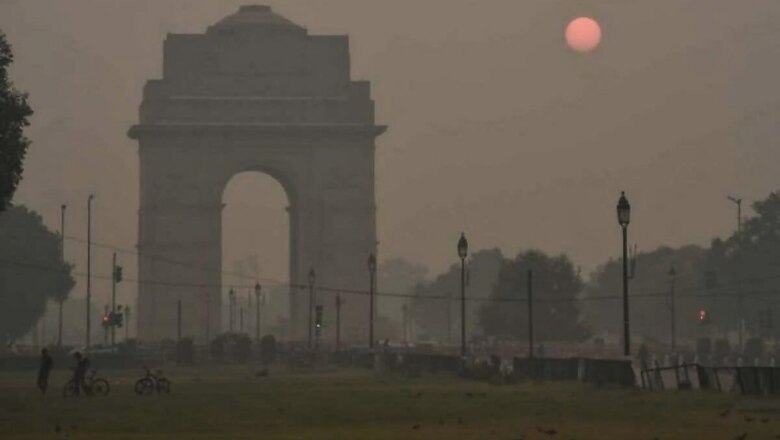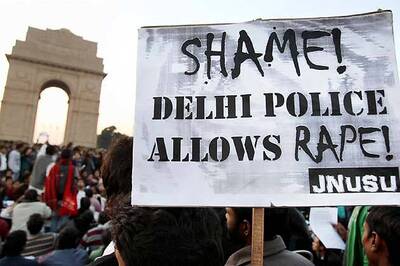
views
Delhi’s air quality remained in the ‘very poor’ category on Saturday with the Air Quality Index (AQI) recorded at 347. The Ministry of Earth Sciences’ air quality monitor, System of Air Quality and Weather Forecasting and Research (SAFAR), said that some locations entered ‘severe’ zone but that will be short lived as winds are expected to increase slightly.
Some areas like Mundka, Wazirpur and Alipur recorded ‘severe’ levels of air pollution, authorities said. It said the air quality could improve on October 26.
“The overall Delhi’s Air Quality Index (AQI) is in the very poor category with few Delhi locations entering at higher zone but that will be short lived. This is mainly because the extremely calm local surface winds which were prevailing yesterday are likely to increase slightly and may further pick-up by Oct 26,” SAFAR said. It also said the AQI is predicted to continue to remain in ‘very poor’ category but without further deterioration.
“Slow improvement in the current condition is expected by October 26 leading to a middle range of very poor,” it said. SAFAR synergized stubble fire counts stood at 1,292 on Friday and its share in Delhi’s pollution was nine per cent.
“The boundary layer wind direction is westerly and wind speed is low. Hence, pollutant transport towards the Delhi region will remain low. The SAFAR model estimate of stubble burning share in PM2.5 is 9 per cent for today,” it said. The air quality index (AQI) on Friday was recorded 366 while it was 302 on the previous day.
An AQI between 0 and 50 is considered ‘good’, 51 and 100 ‘satisfactory’, 101 and 200 ‘moderate’, 201 and 300 ‘poor’, 301 and 400 ‘very poor’, and 401 and 500 ‘severe’. A significant increase in stubble fire count was observed around Haryana, Punjab, and neighbouring regions on Thursday which stood at 1,213.
Ten monitoring stations in Delhi entered the ‘severe’ zone on Friday according to the AQI monitoring mobile application SAMEER, developed by the Central Pollution Control Board (CPCB). PM 2.5 are tiny particulate matter less than 2.5 microns in diameter and can enter deep into the lungs and even the bloodstream. The stubble fire count for Wednesday was 1,428.
The 24-hour average Delhi’s AQI was recorded at 256 on Wednesday, 223 on Tuesday and 244 the day before. The figures are based on data collected from 36 monitoring stations in the city.
The Delhi government has kick-started its ‘Red Light On, Gaadi Off’ anti-pollution campaign for which it has deployed 2,500 environment marshals at 100 traffic signals across the city to generate awareness and curb vehicular pollution. The drive will be implemented in all 70 assembly constituencies from October 26 andwill go on till November 15 from 8 am to 8 pm.
It is an awareness drive by the Delhi government and no person will be issued challans, the government has said.
Read all the Latest News and Breaking News here




















Comments
0 comment